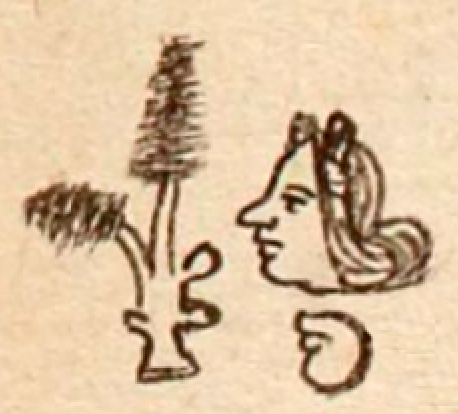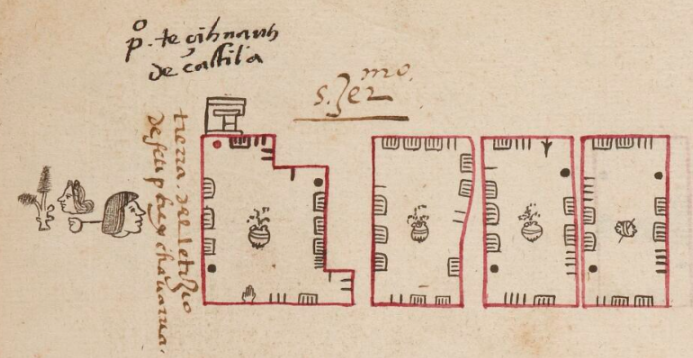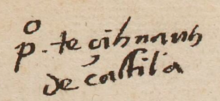Tecihuauh (Verg12r)
Tecihuauh (Verg12r)
This black-line drawing of the compound glyph for the personal name Tecihuauh (“Someone's Woman,” attested here as a man’s name) shows the head of a woman in profile facing toward the viewer's left. Below here is a part of a face, meant to provide a phonetic indicator for the "Te-" at the start of the name, derived from lips (tentli). To the left of the woman and the partial face is an upright amaranth plant (huauhtli), which is there to provide the phonetic value of "-huauh" at the end of the name.
Stephanie Wood
Amaranth is a key item of the Nahua diet, still eaten in significant quantities today. It is a gluten-free and nutritious quasi-cereal and protein with various health benefits. Figures representing divine forces were shaped with amaranth mixed with honey. This food had such an important place in Nahua spiritual beliefs and activities that the colonizers were fearful it could impede the acceptance of Christianity, so they tried to outlaw its cultivation.
Stephanie Wood
1539
Jeff Haskett-Wood
amaranto, cereales, comida, plantas, mujeres, labios

te(tl), stone, https://nahuatl.wired-humanities.org/content/tetl-0
cihua(tl), woman, https://nahuatl.wired-humanities.org/content/cihuatl
-hua, (possession), https://nahuatl.wired-humanities.org/content/hua
Stephanie Wood
Codex Vergara, folio 12r, https://gallica.bnf.fr/ark:/12148/btv1b84528032/f31.item.zoom
Images of the digitized Florentine Codex are made available under the following Creative Commons license: CC BY-NC-ND (Attribution-NonCommercial-NoDerivs 4.0 International). For print-publication quality photos, please contact the Biblioteca Medicea Laurenziana ([email protected]). The Library of Congress has also published this manuscript, using the images of the World Digital Library copy. “The Library of Congress is unaware of any copyright or other restrictions in the World Digital Library Collection. Absent any such restrictions, these materials are free to use and reuse.”




